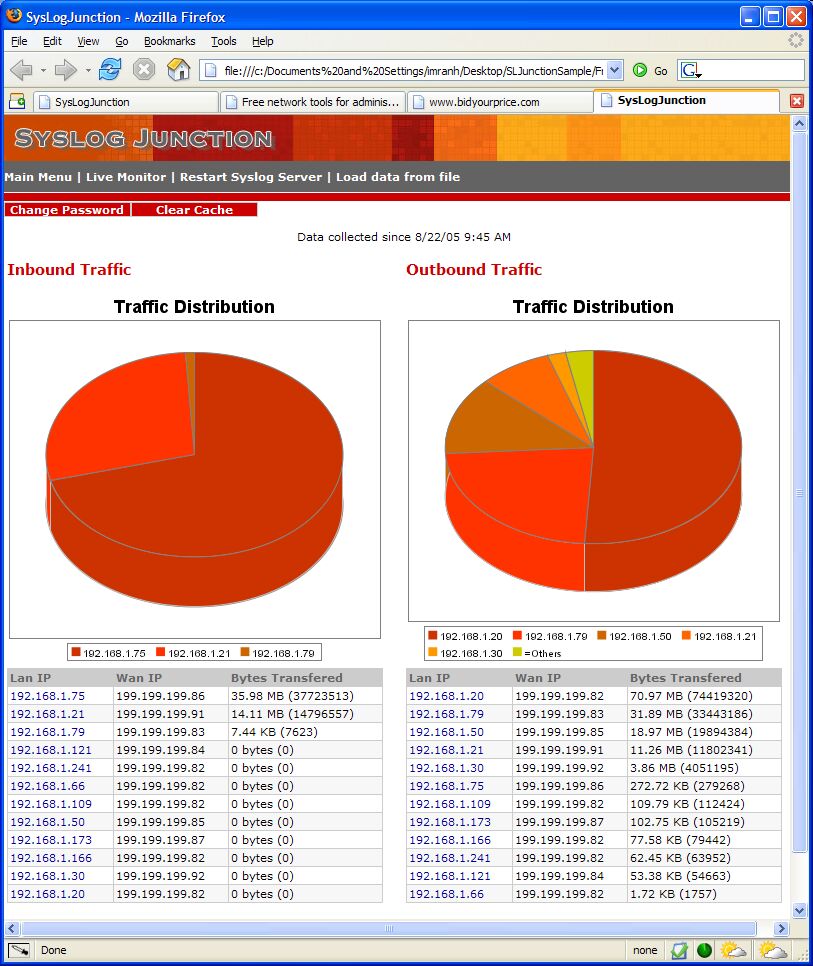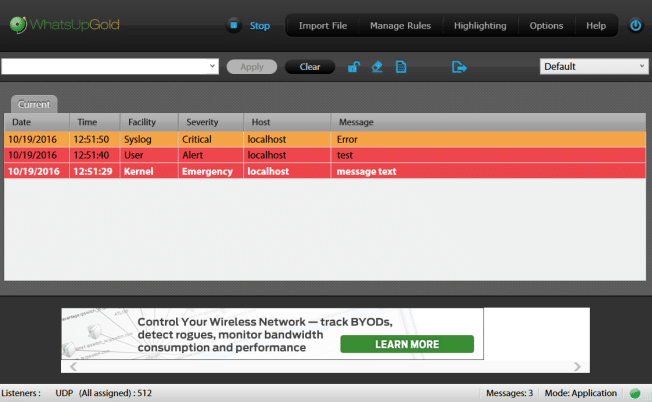


On the NetworkListener line, need to + two Strings Add a new Sockets dictionary item - there's just BSDSystemLogger initially. In Finder, navigated to /System/Library/LaunchDaemons and double-clicked the file. Also changed permissions of the syslog daemon PLIST Change directory permissions of /System/Library/LaunchDaemons Usually most program and apps use C or syslog application.
SYSLOG SOFTWARE FOR MAC PRO
I know, I'm lazy … I spend my work day fixing problems in mobile phone networks - at home, I just want my shit to work (hence why fixing my Mac Pro took so long).Īnyway, this is how I got syslogd to accept my modem's logs, using the scraps of info from other, cleverer souls than I - Mac Pro running macOS High Sierra 10.13.4: DSM - Control Panel - Win/Mac/NFS - Windows File Service - Enable Transfer.
SYSLOG SOFTWARE FOR MAC HOW TO
Did some research on how to get the syslogd daemon to accept these logs - didn't appear to be anything in simple step-by-step format, and Apple had changed things over the years so the information wasn't necessarily up-to-date, but I figured it out. To get some idea, I thought I'd start sending the modem's logs to a syslog server. However the NBN product is a magnitude more unreliable … constant drop outs. Anything is better than the piddly 4Mbps we were getting in the last days of ADSL2. Of course, we have no chance of getting 100Mbps but we're happy with the 50Mbps possibility (around midnight, about 44Mbps). So when NBN became available, we jumped at the chance. We'd had ADSL2 since 2005 and never managed to break 6Mbps downstream. A few months ago we finally were able to switch over from ADSL2 to NBN's fibre-to-the-node (FTTN) VDSL. See SELinux configuration conflicts for more information. If the system has SELinux enabled in enforcing mode (run the getenforce command to check the status), it may be necessary to add exceptions to the SELinux policy. In the Devo web application, go to Data Search, locate the box.unix table and make sure that the logger messages appear in the table. Use the logger command to write test messages to the system log. If at this point you have already set up a rule on the Devo Relay that will recognize, tag, and forward the events that it receives from this source, you can test the connection. $ sudo launchctl load /System/Library/LaunchDaemons/ 4.3 Writing Logs to Disk Syslog may be recorded on disk and automatically saved to the desired location. You may open multiple instances of Syslog Viewer - e.g. To restart syslog on a MacOS X, use the following commands: $ sudo launchctl unload /System/Library/LaunchDaemons/ 3rd party syslog format (based on customer inputs) If the loaded files contain logs from multiple devices, they will be separated into multiple tabs. Restart syslogĪfter editing the configuration file, you will need to restart syslog for the changes to take effect: the syslog version does not support TCP, then the line should contain just one at symbol to specify UDP instead. Remember that you will have to set up a rule on the relay that will recognize the inbound events from the data source, apply the appropriate Devo tag, and forward the events to the Devo Cloud. To view a list of active relays, go to Administration → Relays in the Devo web application. To send system log data to a Devo Relay using TCP, open the /etc/nf file and add the following line to the end of the file where DEVO-RELAY is the IP address or server name of the relay and PORT is the port enabled to receive the events. The relay can apply rules to tag the inbound events and forward them outbound over a secure channel to the Devo Cloud. Since UDP lacks congestion control mechanisms, we recommend enabling TCP for all syslog transmissions in order to prevent possible data loss during transmission.ĭue to its inability to apply tags to events and to implement security, syslog should only be used to send events to a Devo In-House Relay - and wherever possible, using TCP. However, later syslog versions also support TCP. This article describes how to send system log data to a Devo relay using the basic syslog standard.Įarlier versions of the syslog standard protocol, including those used for MacOS X implementations, only support UDP for transport.


 0 kommentar(er)
0 kommentar(er)
